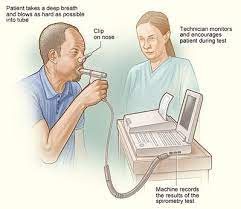A 22-year-old man presented with malaise and anorexia for 1 week. He vomited on one occasion, with no blood. He has felt feverish but has not taken his temperature. For 2 weeks he has had aching pains in the knees, elbows and wrists without any obvious swelling of the joints.
He has not noticed any change in his urine or bowels.
Five years ago he had glandular fever confirmed serologically. He smokes 25 cigarettes per day and drinks 20–40 units of alcohol per week. He has taken marijuana and ecstasy occasionally over the past 2 years and various tablets and mixtures at clubs without being sure of the constituents. He denies any intravenous drug use. He has had irregular homosexual contacts but says that he has always used protection. He claims to have had an HIV test that was negative 6 months earlier. He has not traveled abroad in the last 2 years.
He is unemployed and lives in a flat with three other people. There is no relevant family history.
Examination
He has a temperature of 38.6°C and looks unwell. He looks as if he may be a little jaundiced. He is a little tender in the right upper quadrant of the abdomen. There are no abnormalities to find on examination of the joints or in any other system.
Investigations
(normal values shown in brackets)
Haemoglobin 14.1 g/dL (13.3–17.7 g/dL)
Mean corpuscular volume (MCV) 85 fL (80–99 fL)
White cell count 11.5 × 109/L (3.9–10.6 × 109/L)
Platelets 286 × 109/L (150–440 × 109/L)
Prothrombin time 17 s (10–14 s)
Sodium 135 mmol/L (135–145 mmol/L)
Potassium 3.5 mmol/L (3.5–5.0 mmol/L)
Urea 3.2 mmol/L (2.5–6.7 mmol/L)
Creatinine 64 μmol/L (70–120 μmol/L)
Bilirubin 50 mmol/L (3–17 mmol/L)
Alkaline phosphatase 376 IU/L (30–300 IU/L)
Alanine aminotransferase 570 IU/L (5–35 IU/L)
Fasting glucose 4.1 mmol/L (4.0–6.0 mmol/L)
Questions
• What is your interpretation of the findings?
• What is the likely diagnosis?
• What treatment is required?
Answers And Discussion



